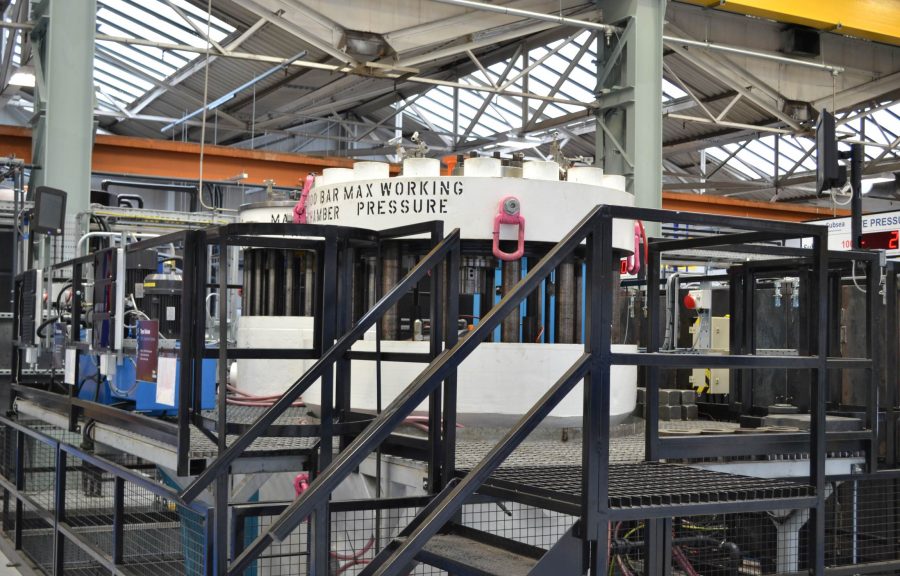Destructive testing plays a crucial role in evaluating the durability of a component in order to assess its mechanical properties and structural integrity.
Destructive testing involves subjecting a component to extreme conditions until it fails or undergoes a significant change in order to understand how it behaves under stress and identify potential weaknesses.
A component is subject to destructive testing in order to:
- Ensure quality and reliability
- Provide insights into the behaviour of materials under extreme conditions
- Determine the cause of failure if a component has previously failed in real-world applications
- Meet regulations and standards that ensure safety and compliance
At Tyne Pressure Testing we conduct several methods of destructive testing to test materials, components or structures under extreme conditions.
Hyperbaric Testing
Hyperbaric testing involves subjecting components to high-pressure conditions that exceed atmospheric pressure. This is a form of destructive testing when materials or equipment are designed to withstand extreme pressures. The test assesses how a product responds to pressure changes and identifies weaknesses or potential failures.
Applications: Hyperbaric testing is commonly used in industries like aerospace and underwater engineering.
Goal: To evaluate the performance of equipment, vessels or materials at subsea or pressurised environments.
Hydrostatic Testing
Hydrostatic testing is a form of destructive testing that assesses a component’s ability to withstand internal pressure. It involves filling a vessel or system with liquid and pressurising it to levels above its operational pressure to identify leaks, weaknesses or deformations under pressure.
Applications: Hydrostatic testing is frequently employed in industries like plumbing, pipeline construction and pressure vessel manufacturing.
Goal: To ensure the integrity and safety of the components.
Temperature Testing
Temperature testing, also known as thermal testing, assesses how materials and components respond to extreme temperature conditions. This is a form of destructive testing when a material’s properties are significantly altered, or if a failure occurs during the test. For example, cryogenic testing evaluates the behaviour of materials or components at extremely low temperatures, typically below -150°C (-238°F).
Applications: Temperature testing is crucial in industries such as aerospace, automotive and electronics.
Goal: To evaluate how materials and components perform in both high-temperature and low-temperature environments.
Endurance Testing
Endurance testing is a type of destructive testing focused on assessing the long-term durability and performance of materials, or components, under cyclic or continuous stress. While endurance testing does not necessarily lead to immediate material failure, it may result in the gradual degradation of properties or the development of fatigue cracks over time.
Applications: Endurance testing is commonly used in automotive and aerospace applications where components are subjected to repetitive loading, thermal cycling or other cyclic stress conditions over an extended period.
Goal: To determine service life and predict potential failure modes under repeated use.
Pressure Testing (gas)
Pressure testing with gases evaluates how materials and components respond to pressurised gases.
Applications: Pressure testing is commonly used in applications involving gas storage, pipelines and gas-based systems. It is crucial in these industries to ensure the safety and integrity of products containing or transporting fluids or gases under pressure.
Goal: To identify weaknesses, deformations or failures that may occur when materials are exposed to pressures exceeding their intended operational limits.
Vacuum Testing
Vacuum testing is a form of destruction by applying a low to ultra-high vacuum to the inside of a product or on the external of the product. The levels are increased until deformation or destruction occurs.
Applications: Vacuum testing is crucial in aerospace, automotive, electronics and medical industries.
Goal: To identify leaks, defects or weaknesses.
Load Testing
Load testing is where a unit is fixed in place and a load is applied, the load will be increased until destruction to the unit occurs. The point of this kind of destructive testing is to physically prove the theoretical calculations for a maximum limitation of a design, it evaluates the strength, stability and performance of components under various stress conditions.
Applications: Load testing is used in a range of industries such as construction, manufacturing and automotive.
Goal: To assess the structural integrity of a component subjected to various loads.
Our engineers are highly skilled and experienced in completing destructive testing for a range of industries. Our customers have the opportunity to select our beginning to end, fully project managed testing service or can independently hire the chambers.
If destructive testing is something that you are interested in, please contact one of our experts to discuss your requirements.
